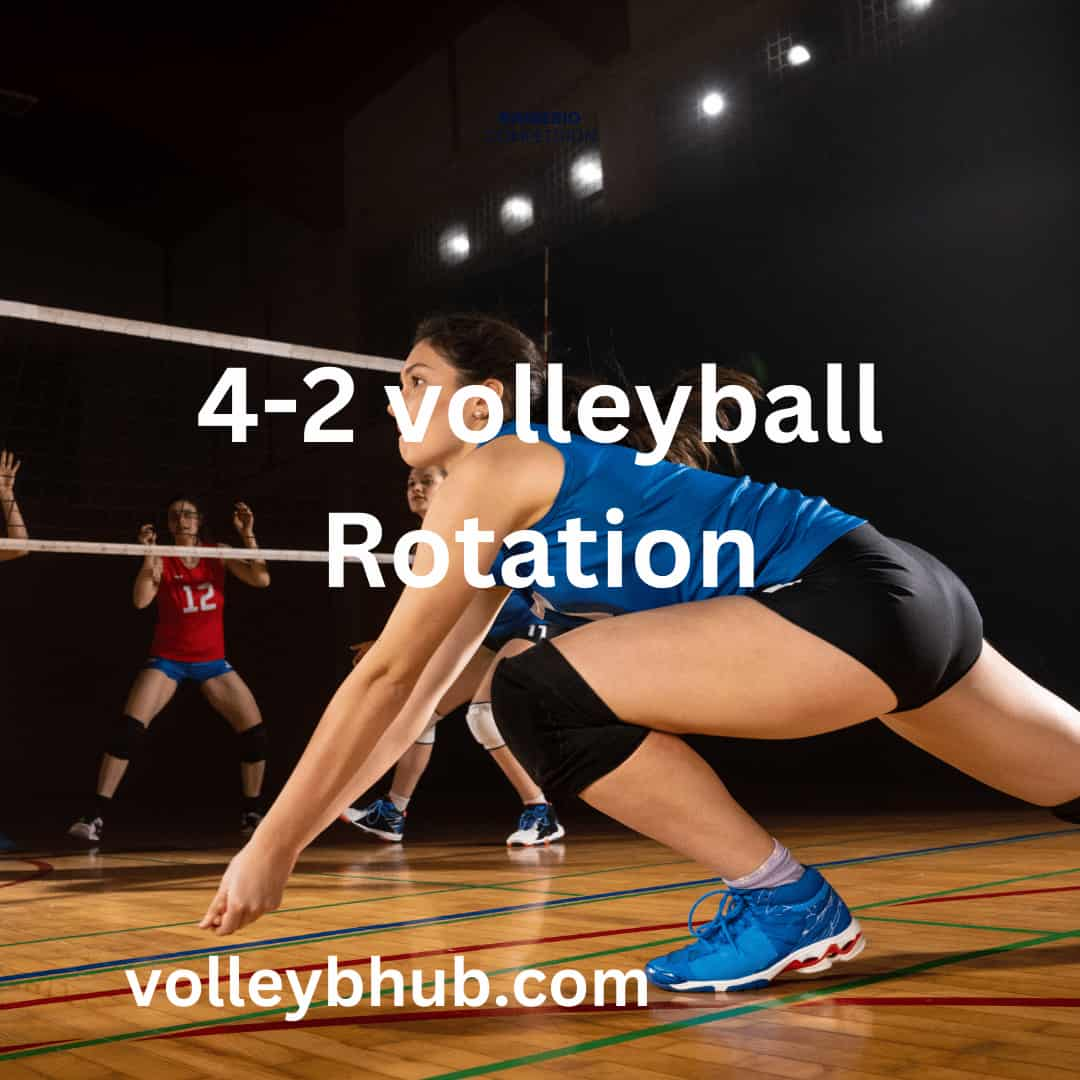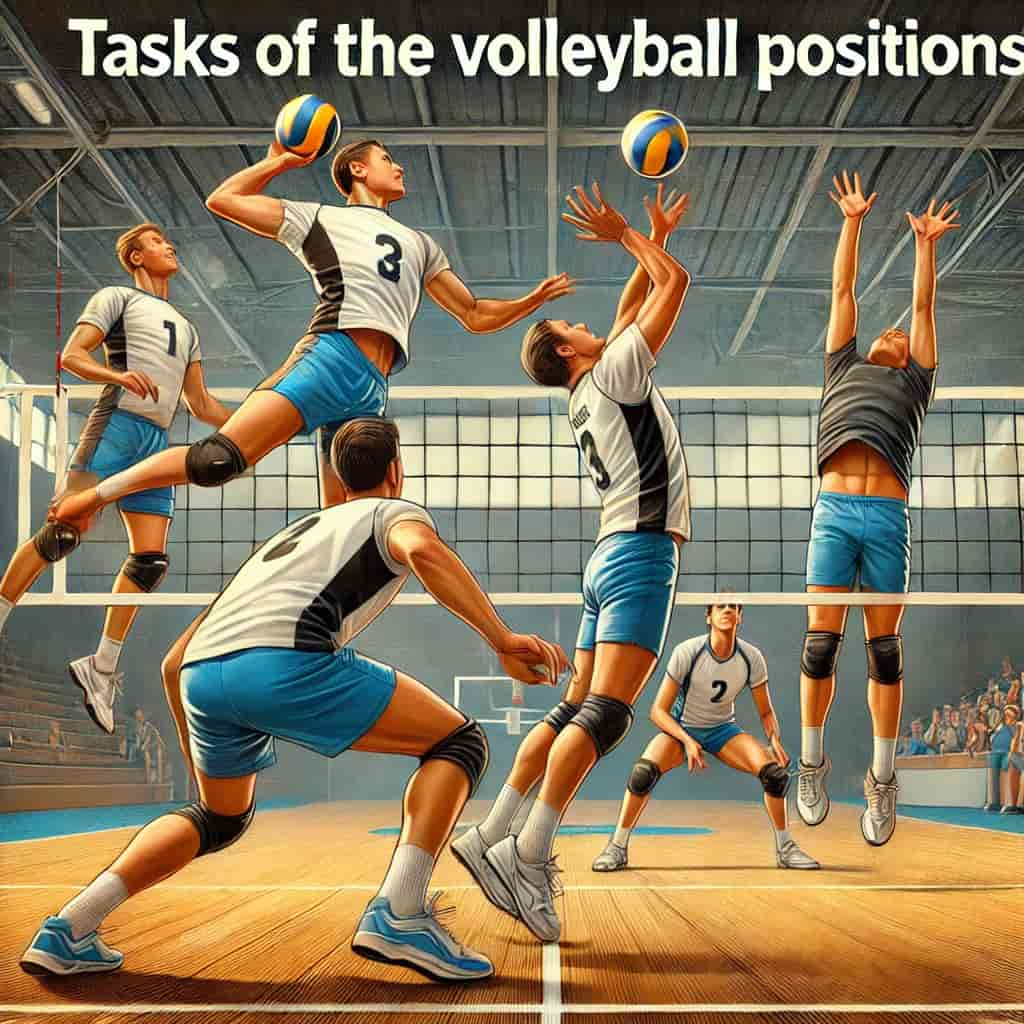
Understanding the 4-2 Volleyball Rotation
In volleyball, coaches strive to optimize their team’s offensive capabilities by utilizing as many players as possible in attack positions. This approach not only diversifies the strategies and plays available but also intensifies the cognitive load on opponents’ blockers, who must track multiple attackers simultaneously.
However, the decision to increase the number of attackers hinges on the actual capabilities of the roster. Questions arise such as whether adding more attackers might compromise the quality of set-ups, or if the offense remains too predictable, relying heavily on just a few players receiving the majority of passes.
In striving for the ideal balance that caters to the strengths and limitations of the team, one viable option is the 4-2 volleyball rotation, also known as the 4-2 system. This rotation allows teams to adapt and potentially enhance their tactical execution by effectively managing their offensive distribution.
Exploring the Basics of the 4-2 Volleyball System
The 4-2 volleyball rotation simplifies the game by eliminating the complexity of managing hybrid roles or backrow setters. In this system, four players are designated as attackers, and two as setters, with the setters positioned opposite each other in zones 1 and 4. This layout positions the middle attackers in zones 3 and 6 and the outside attackers in zones 2 and 5, following the setters in the rotation sequence.
Functionally, the setter in the front-court is responsible for setting, while the one in the back-court shifts to a defensive role. As the rotation progresses, the back-court setter moves to the front to take over setting duties for the next three rotations, allowing the previous setter to transition to defense. This strategy ensures a dynamic and fluid offensive operation, maintaining balance and continuity within the team’s gameplay.
Understanding the 4-2 Volleyball Rotation
The 4-2 formation in volleyball is recognized as a foundational offensive strategy, particularly useful for teams emphasizing simplicity and efficiency. This setup involves two setters and four hitters. Setters are strategically positioned on opposite sides of the court, ensuring that one is always at the front to direct the play for each rotation.
Player Positions in the 4-2 System
In the 4-2 formation, the setter is consistently positioned in the front row, making tactical decisions and setting up the ball for attackers. This system allows the middle blockers and outside hitters to maintain their standard roles without the need for substitutions, simplifying the on-court dynamics.
This straightforward configuration ensures there are always two attackers and a setter in the front row, ready to execute offensive plays. The design of this system allows for consistent setup and execution, making it ideal for teams to build and maintain momentum during a match.
Key Tactics for Implementing a 4-2 Serve Receive
The 4-2 serve receive formation in volleyball offers a straightforward yet effective strategy for teams, particularly those at the beginner level. This system emphasizes basic yet strategic plays that enhance team performance.
Optimal Passing and Setting Techniques
For teams employing a 4-2 system, the initial pass typically goes to the middle. This allows the setter, positioned ideally in the Right Front, to facilitate versatile plays. The setter has the options to direct the ball to hitters on the outside, weak side, or even the middle, thus diversifying the attack and complicating the defense’s task.
Empowering Setters to Take Offensive Actions
With the setter always stationed at the front row in this system, there’s a unique opportunity to turn the setter into an offensive threat. Since the formation generally involves only two attackers at the net, the setter can effectively use tactics like dumps or tips to surprise the opposition and score directly.
Establishing Reliable Alternatives for Challenging Passes
It’s crucial to have contingency plans when passes don’t go as intended. If attackers end up handling the serve receive, or if a pass is significantly misdirected, setting up a back row player for a high 10 ball or an outside set provides a safe alternative, ensuring the play continues fluidly even under less-than-ideal circumstances. This strategy ensures that the team remains adaptable and competitive, ready to handle various in-game situations effectively.
Adjustments in the 4-2 Volleyball Rotation
Implementing the 4-2 volleyball strategy effectively requires adjustments based on your team’s composition and the roles of the players. This approach is particularly important in organizing serve receive formations to optimize each player’s strengths.
Tailoring Serve Receive to Team Dynamics
In teams that include primary passers, a libero, or defensive specialists, it’s essential to customize the serve receive setup. This ensures that the formation leverages these players’ skills optimally, allowing for a more fluid and effective defensive to offensive transition. By adjusting the serve receive according to the specific capabilities and roles of your players, your team can maintain a strong defensive stance while setting up efficiently for the attack.
Volleyball Formations: Setter Positioning in Zone 2
When structuring volleyball strategies, the placement of the setter is crucial for orchestrating effective plays. A common formation involves positioning the setter in Zone 2, which can significantly influence the team’s overall dynamic and efficiency during a match.

Effective Positioning for the Setter
Placing the setter in Zone 2 allows for strategic advantages in setting up attacks. This position gives the setter access to various options for distributing the ball, making it easier to coordinate attacks and adjust to the opposing team’s defense. It’s an essential setup for teams aiming to maximize their offensive potential while maintaining a robust defensive alignment.
Advanced Volleyball Strategy: Setter in Middle Front
In volleyball, when using a 4-2 serve receive rotation with the setter positioned in Zone 3 (Middle Front), the team’s dynamics and positioning are crucial for successful execution. This setup is particularly strategic for enhancing the team’s offensive capabilities.
Read Also: 5-1 Volleyball Rotation [Top Strategies]
Effective Positioning for Enhanced Gameplay
When the setter is in the Middle Front, it’s a tactic aimed at strengthening the team’s serve receive configuration. In this arrangement, the other front row players might need to adjust their positions slightly back, aiding in passing and setting up the play effectively.
The front row players are organized to the left side of the court, which strategically positions the outside hitter closer to the sideline, ready to execute a powerful attack. This setup not only facilitates quicker and more efficient transitions into attacking positions but also optimizes the spatial dynamics on the court, making it easier for the outside hitter to move into position for an optimal hit..

Simplifying the Setter’s Role in the 4-2 Volleyball Offense
In volleyball, the 4-2 formation is designed to optimize the setter’s ability to manage various challenges effectively. This setup enhances the setter’s efficiency, particularly in handling difficult passes and utilizing strategic attacks.
Challenges and Strategies for Setters
Setters often find themselves dealing with tough situations like setting balls that are passed too close to the net or chasing down off-target passes. The 4-2 rotation strategically positions the setter to better handle these scenarios, allowing them to move swiftly and adapt to the play’s demands.
Additionally, if the setter possesses the skill to anticipate the opposing team’s blockers, they can use a “setter dump” attack to catch the opponents off guard. This is especially potent if the setter is left-handed, offering a unique angle of attack. Such tactics not only diversify the team’s offensive strategies but also compel the opposing blockers to regard the setter as a dual threat—both a distributor and an attacker. This dual role increases the likelihood of creating favorable one-on-one situations at the net.
Adapting to Free Balls and Team Dynamics
Occasionally, opposition teams might send over a free ball, disrupting the front court setter’s rhythm by forcing them to handle the first ball, thus rendering them unable to set. In the 4-2 system, this is efficiently managed by having another setter in the backcourt ready to step in seamlessly. This flexibility ensures that the team maintains its desired offensive tempo without disruption, showcasing the strategic depth and adaptability of the 4-2 formation.
Implementing the Slide Attack in the 4-2 Volleyball System
The slide attack is a dynamic offensive maneuver that can be effectively utilized in the 4-2 volleyball rotation, enhancing the strategic play of the middles. This technique introduces a complex challenge for the opposing team’s blockers.
Enhancing Offensive Strategy with the Slide Attack
In the 4-2 system, employing a slide attack compels the opposition’s blockers to engage in rapid and extensive communication. They must coordinate their responses to both the slide attack and potential setter attacks on the second ball. This high demand for swift communication often leads to advantages for the attacking team, as players generally find quick and effective communication challenging during active play.
Defensive Dynamics in the 4-2 Formation
Defensively, the 4-2 system ensures structured coverage with three designated backcourt defenders. The player in zone 1 is focused solely on one critical task: ensuring the ball is successfully played up and kept in play. This clear delineation of responsibilities helps maintain a strong defensive stance, supporting the overall team strategy and resilience during play.
The 4-2 Volleyball System: Ideal for Developing and Streamlining Team Play
The 4-2 system in volleyball is particularly advantageous for teams aiming to simplify gameplay or progress from beginner levels. This setup can be highly effective in teaching new players distinct roles while still providing valuable competitive experience.
Simplifying Gameplay for Effective Learning
For teams transitioning from the basic “W+1” system, where players take turns setting from position 3, the 4-2 system offers a structured step up. By reducing movement and the complexity of setter penetration, players can focus more on their specific roles, enhancing learning and performance. This system helps in clarifying responsibilities, making it easier for players to execute their tasks effectively.
Optimizing Offensive Capabilities
The 4-2 formation is also beneficial if a team lacks strong right-side attackers but has capable middles who can execute a slide attack, along with two proficient setters. This arrangement allows the setters to minimize their movement, potentially improving setting accuracy while utilizing strong attackers in their optimal positions. The slide attack provides a versatile option for incorporating right-side attacks without compromising the quality of sets.
Strengthening Defensive Arrangements
Teams that prioritize a solid defensive lineup with dedicated backrow defenders will find the 4-2 system suitable. It supports the strategy of always having three defenders in the backrow, ensuring consistent defensive coverage.
Enhancing Setter-Attacker Coordination
Additionally, the 4-2 system can accommodate teams where specific setter-attacker pairings show strong synergy. By matching setters with their preferred attackers, the system can maximize the effectiveness of these connections.
Summary of Team Style Benefits
- Primarily focused on middle and left-side attacks.
- Suitable for teams developing foundational skills.
- Ideal for teams with strong setter-attacker dynamics.
- Effective for teams with limited right-side attacking options but strong setters and middle attackers.
Enhancing Your Coaching with GMS+
To deepen your understanding of volleyball offensive systems, I highly recommend exploring our comprehensive collection of blogs on the subject. Additionally, consider subscribing to a GMS+ account for a more interactive learning experience.
Benefits of a GMS+ Subscription
A GMS+ subscription unlocks the ability to visualize each offensive system in detail. This tool is not only valuable for coaches but also incredibly beneficial for players. They can observe the components of each system in action and watch how these systems are implemented during actual competitions. This visual aid can significantly enhance their grasp of strategic concepts.
Multi-Faceted Learning Approach
At GMS, we believe in a holistic approach to learning. We advocate for the use of multiple learning techniques, allowing athletes to read about, see, hear, and practice each system. This method ensures that players not only understand the strategies theoretically but are also able to apply them practically in game scenarios.
Our goal at GMS is to provide you with the resources necessary to facilitate effective learning and continuous improvement in your team’s performance. The GMS+ platform is designed to help your athletes enhance their understanding and execution of the game.
FAQ’s: 4 2 Volleyball Rotation
What is a 4-2 rotation in volleyball?
The 4-2 rotation in volleyball is a setup where the team positions four hitters and two setters on the court. This formation is typically adopted by younger or novice teams as it simplifies learning the basic rotations and roles within the game. In its simplest form, the 4-2 rotation requires the team to master just three different rotation positions, making it easier to implement and understand.
What distinguishes a 6-2 volleyball formation from a 4-2?
In volleyball, a 6-2 formation differs from a 4-2 mainly in the number of hitters and setters. The 6-2 uses six hitters and two setters, enabling one setter to handle setting duties when in the back row and attack when in the front row. This contrasts with the 4-2, which has four hitters and two setters, but without the same flexibility in player roles.
What does 4 + 2 signify in volleyball?
In volleyball, the 4-2 formation refers to a strategy where a team uses four hitters and two setters. This setup is particularly useful for teams lacking a dominant hitter, as it allows for consistent setup opportunities with a setter available in both the front and back rows. Setters typically align opposite each other to maintain this balance throughout the game. This formation is more common in lower-level play.
What is the difference between “4×2” and “4×4”?
The term “4×4” refers to a four-wheel drive (4WD) vehicle where all four wheels receive power from the engine. This configuration is ideal for challenging driving conditions. On the other hand, “4×2” denotes a two-wheel drive (2WD) system where only two of the four wheels are powered by the engine. This setup is more common in vehicles designed for regular road use.





